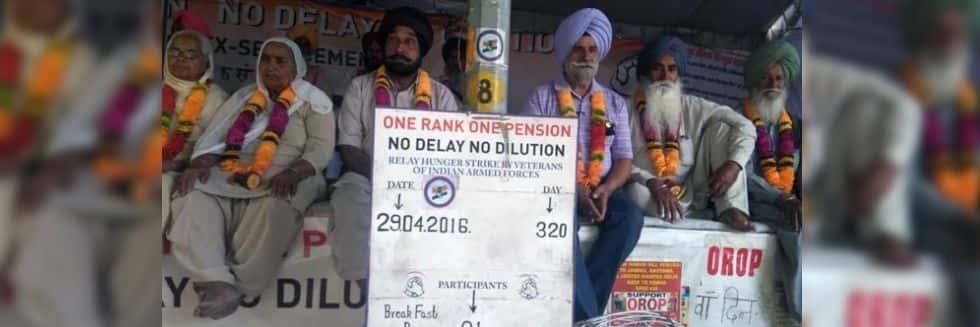Supreme Court on Wednesday upheld the ‘One Rank One Pension’ policy introduced by the Central government in the armed forces as per the notification dated November 7, 2015.
The bench comprising Justice D.Y. Chandrachud, Justice Surya Kant and Justice Vikram Nath refused to accept the petition filed by Indian Ex-Servicemen Movement (IESM). It was alleged that OROP had led to the creation of a separate class among personnel equally situated in “rank” and “length of service”.
“We find no constitutional infirmity in the OROP principle adopted. There is no legal mandate that pensioners who hold same rank must be given same pension,” the bench said.
However, the top court has directed that the re-fixation exercise as per the policy should be carried out with effect from July 1, 2019 and the arrears should be paid to the pensioners within 3 months.
The top court stated that the government’s OROP decision is not arbitrary and it is not for the court to go into the policy matters of the government.
In February 2022, the Centre government had informed the Supreme Court that both “same rank” and “same length of service” are necessary conditions for availing of OROP benefits.
“This pair (‘same rank’ and ‘same length of service’) cannot be impaired. One cannot take only the same rank and ignore the length of service and similarly one cannot merely take the length of service. It is important to highlight that the expression ‘same’ appears twice as ‘same rank’ and ‘same length of service’” the govt had said.
The petitioners have also challenged the Union government’s stand that equalisation of pension would be done every five years.
In the petition, it was contended that a gap of five years would leave them at a great disadvantage. It also stated that periodic equalisation would “cause great injustice to 24 lakh ex-servicemen, 6.5 lakh war widows and veteran widows and their families by creating a situation of One Rank Different Pension’.
Supreme Court Observations In ‘One Rank One Pension’ Policy
We find no constitutional infirmity in the OROP principle as defined by the communication dated 7 November 2015 for the following reasons:
(i) The definition of OROP is uniformly applicable to all the pensioners irrespective of the date of retirement. It is not the case of the petitioners that the pension is reviewed ‘automatically’ to a class of the pensioners and ‘periodically’ to another class of the pensioners;
(ii) The cut-off date is used only for the purpose of determining the base salary for the calculation of pension. While for those who retired after 2014, the last drawn salary is used to calculate pension, for those who retired prior to 2013, the average salary drawn in 2013 is used. Since the uniform application of the last drawn salary for the purpose of calculating pension would put the prior retirees at a disadvantage, the Union Government has taken a policy decision to enhance the base salary for the calculation of pension. Undoubtedly, the Union Government had a range of policy choices including taking the minimum, the maximum or the mean or average. The Union government decided to adopt the average. Persons below the average were brought up to the average mark while those drawing above the average were protected. Such a decision lies within the ambit of policy choices;
(iii)While no legal or constitutional mandate of OROP can be read into the decisions in Nakara (supra) and SPS Vains (supra), varying pension payable to officers of the same rank retiring before and after 1 July 2014 either due to MACP or the different base salary used for the calculation of pension cannot be held arbitrary; and
(iv) Since the OROP definition is not arbitrary, it is not necessary for us to undertake the exercise of determining if the financial implications of the scheme is negligible or enormous.
Principles Governing Pensions And Cut-Off Dates
(i) All pensioners who hold the same rank may not for all purposes form a homogenous class. For example, amongst Sepoys differences do exist in view of the MACP and ACP schemes. Certain Sepoys receive the pay of the higher ranked personnel;
(ii) The benefit of a new element in a pensionary scheme can be prospectively applied. However, the scheme cannot bifurcate a homogenous group based on a cut-off date;
(iii) The judgment of the Constitution Bench in Nakara (supra) cannot be interpreted to read the one rank one pension rule into it. It was only held that the same principle of computation of pensions must be applied uniformly to a homogenous class; and
(iv) It is not a legal mandate that pensioners who held the same rank must be given the same amount of pension. The varying benefits that may be applicable to certain personnel which would also impact the pension payable need not be equalised with the rest of the personnel.






